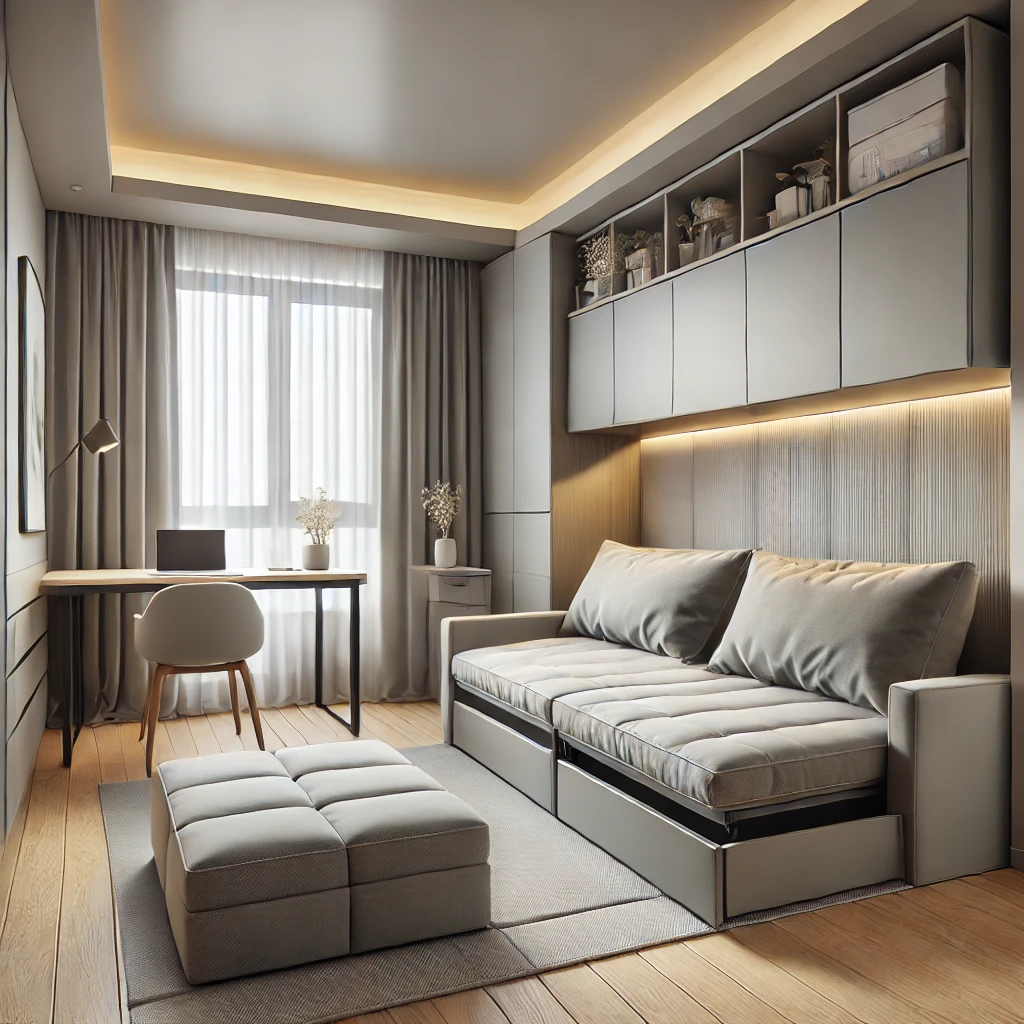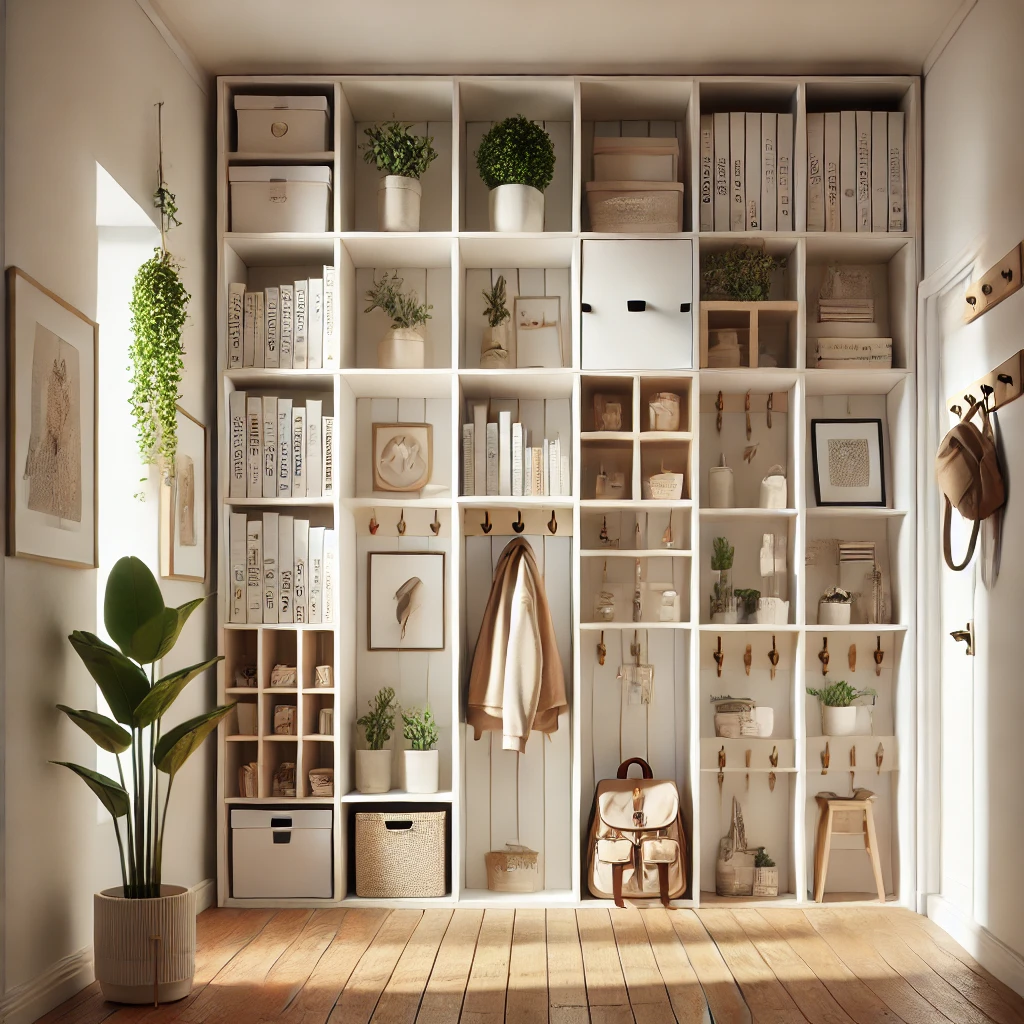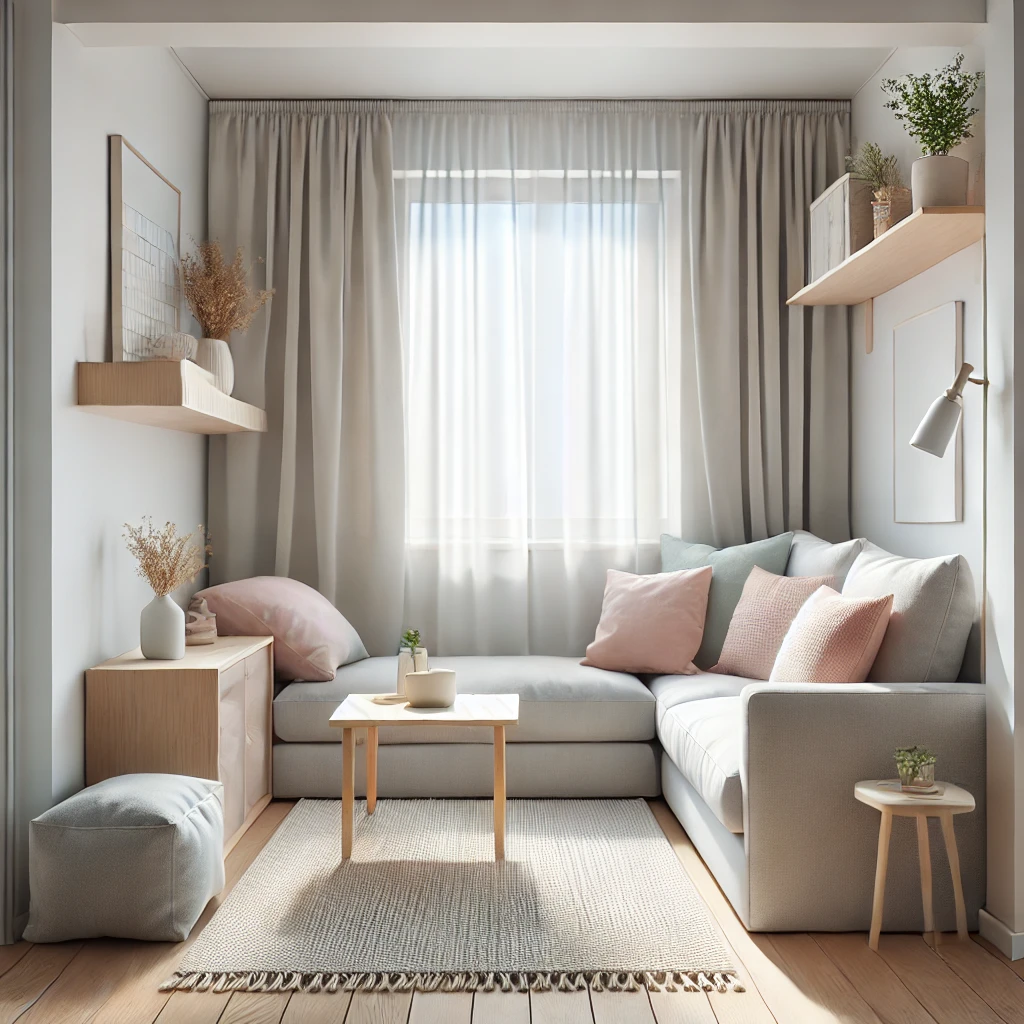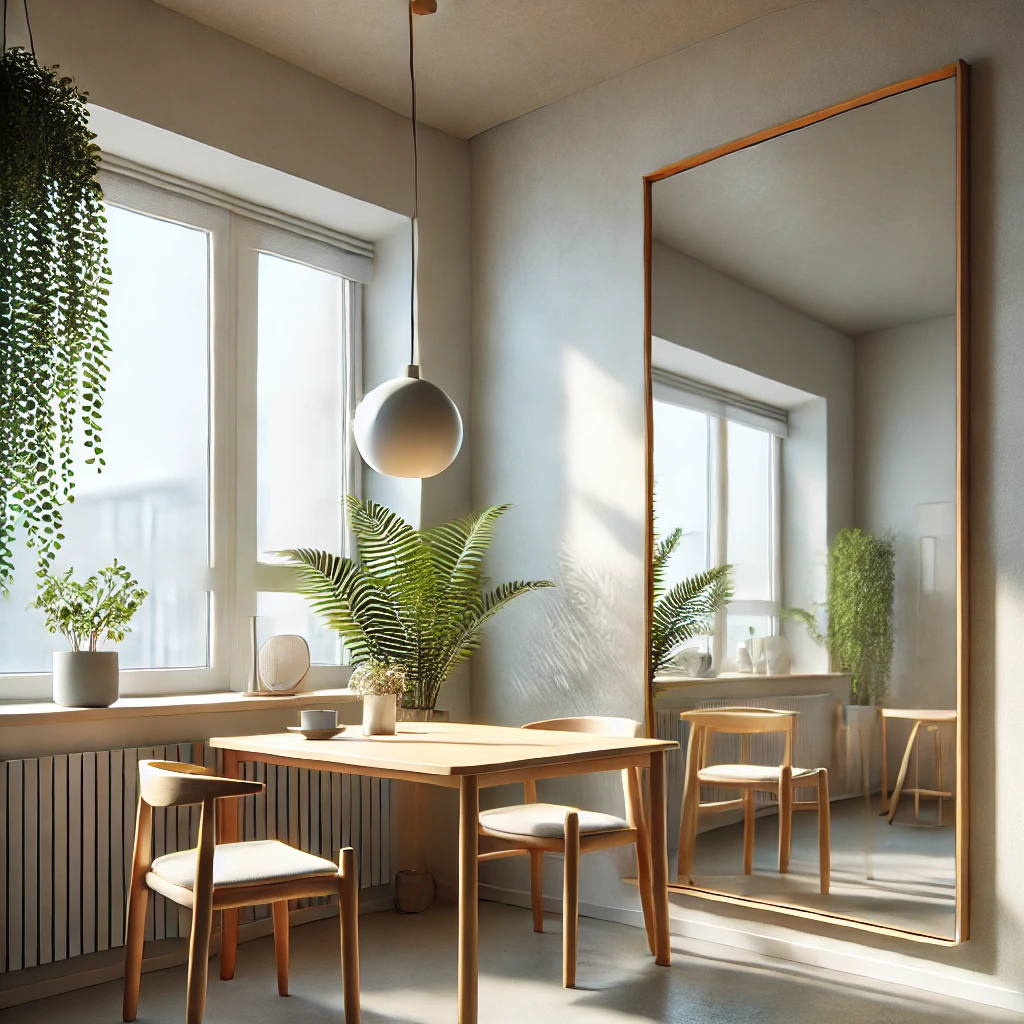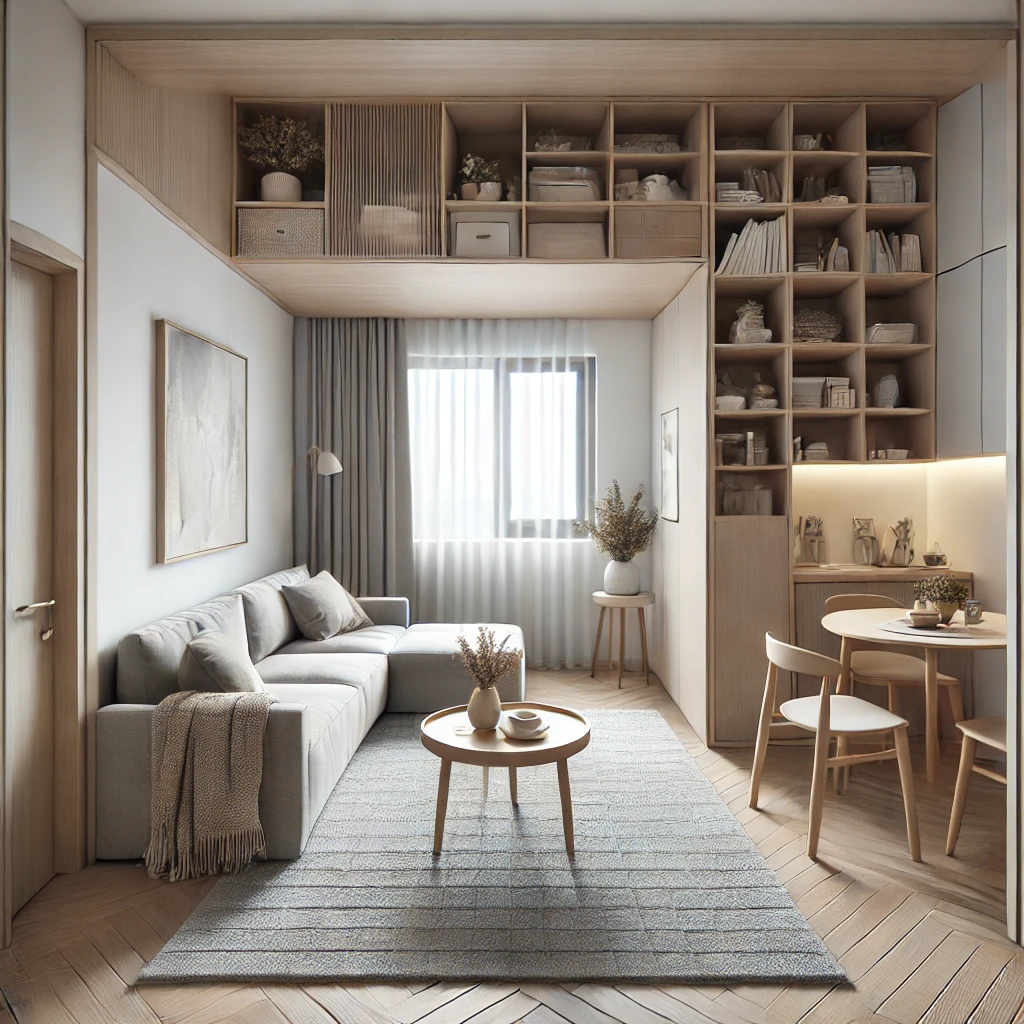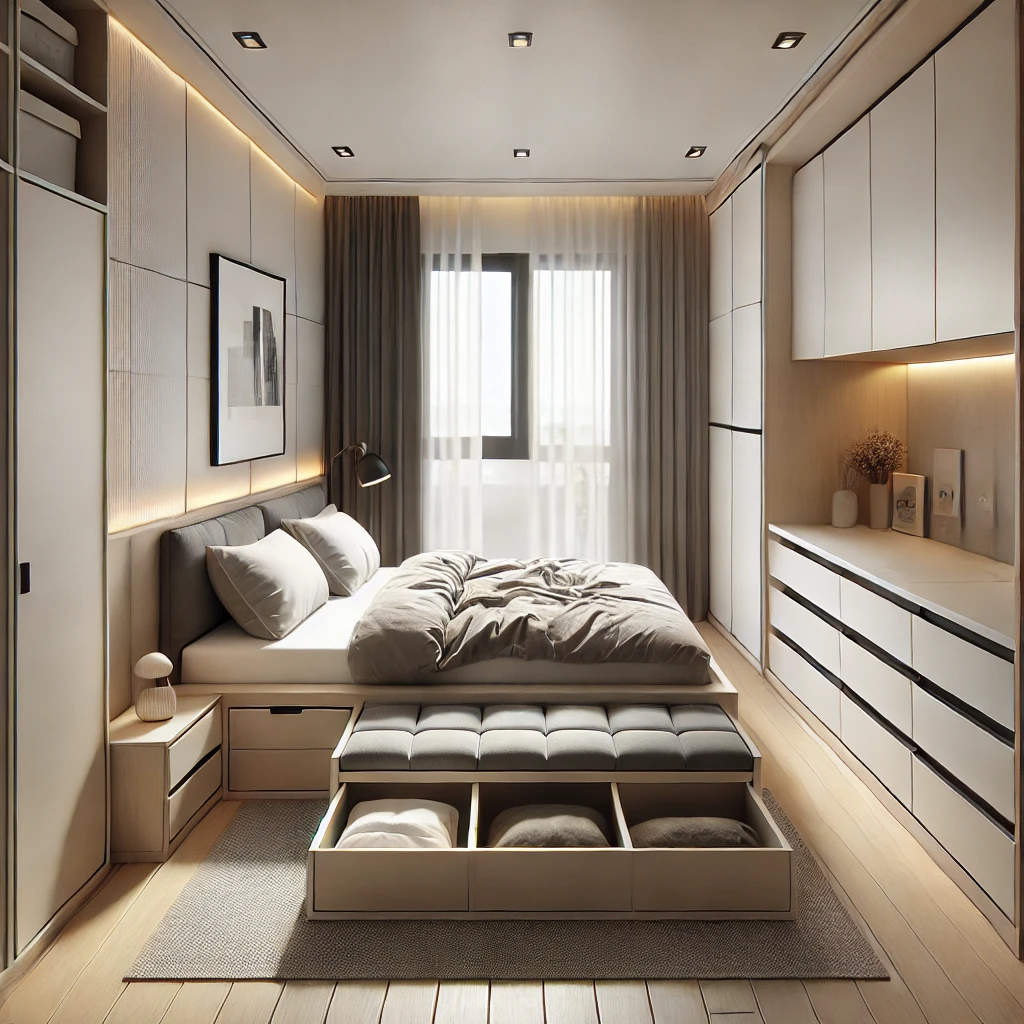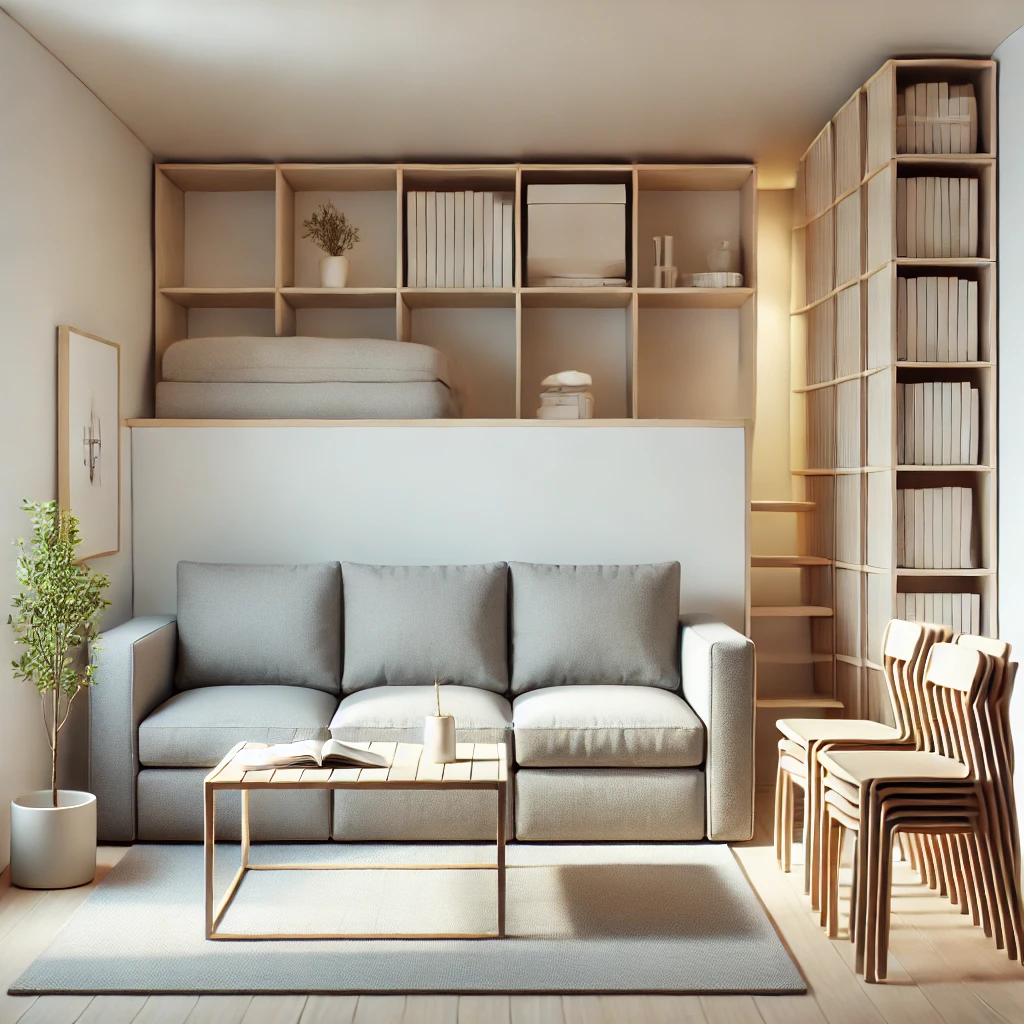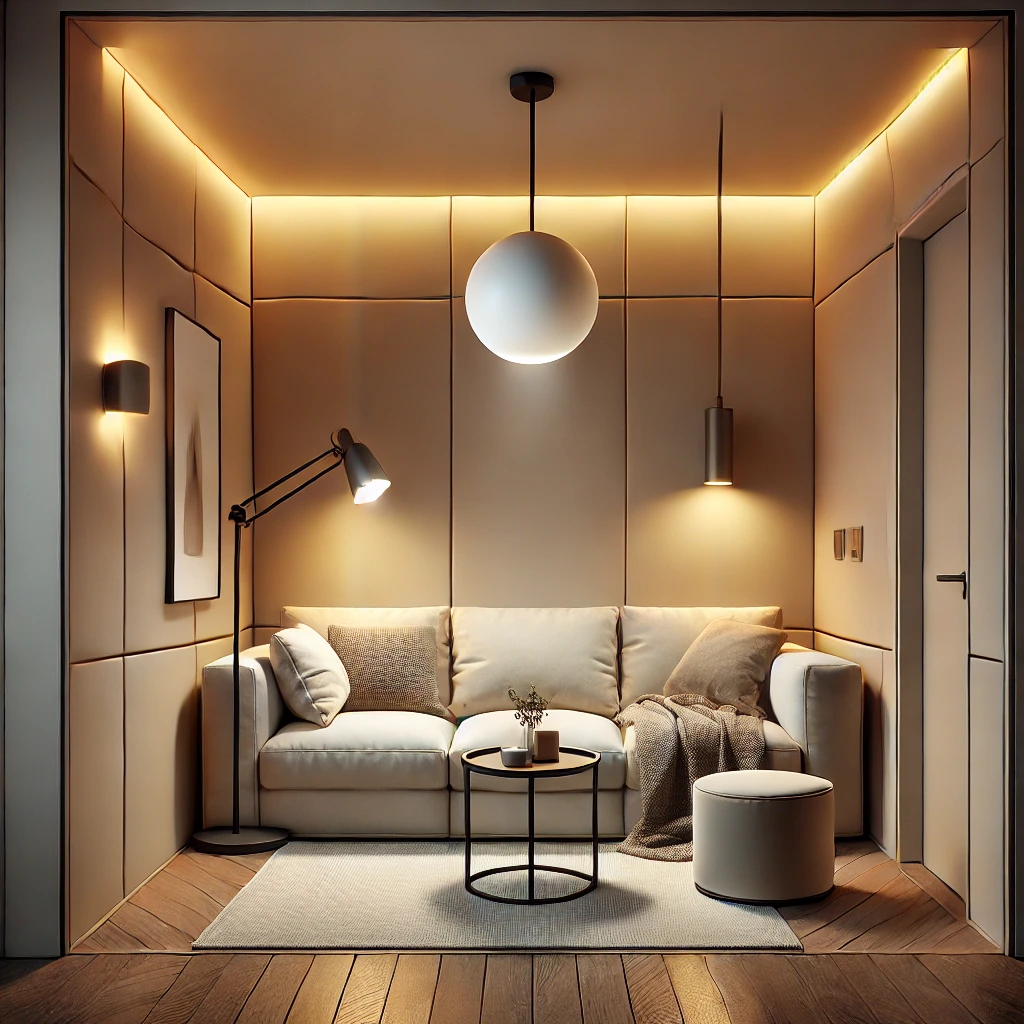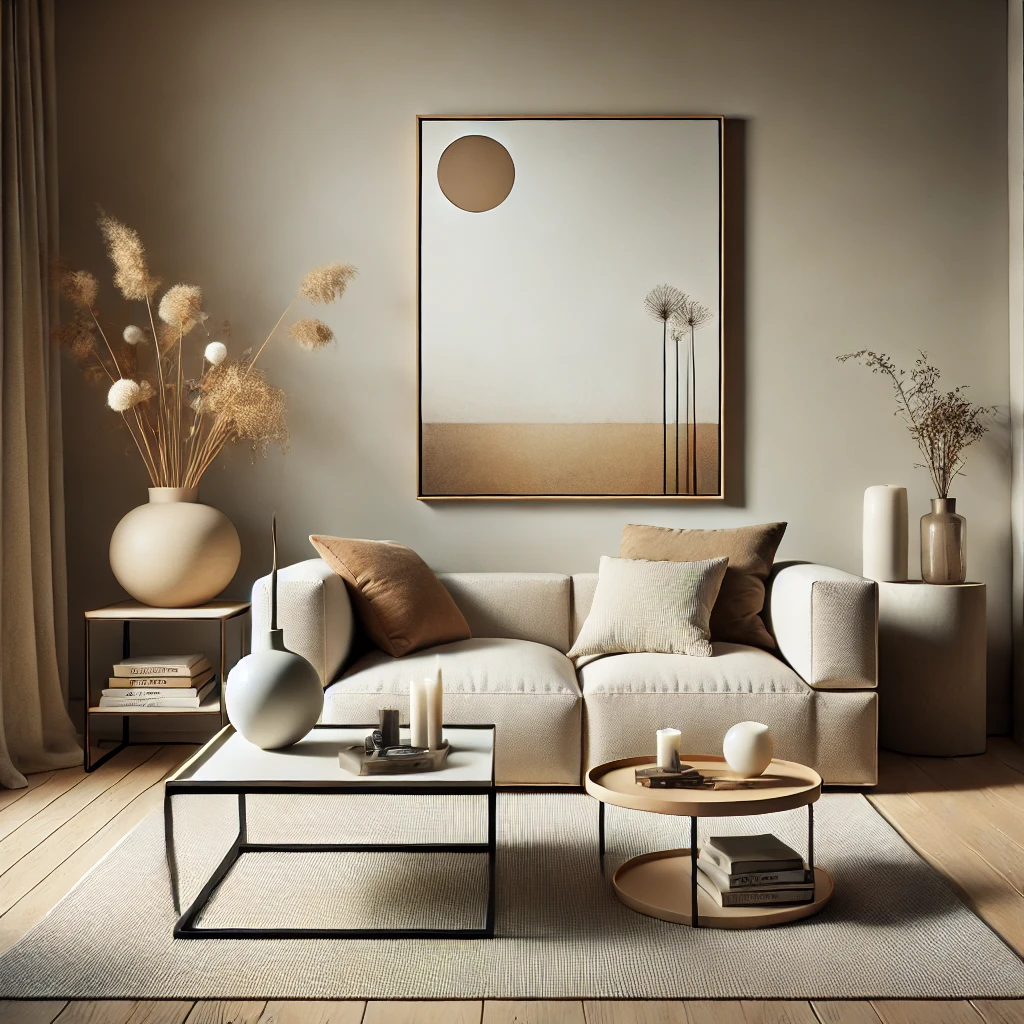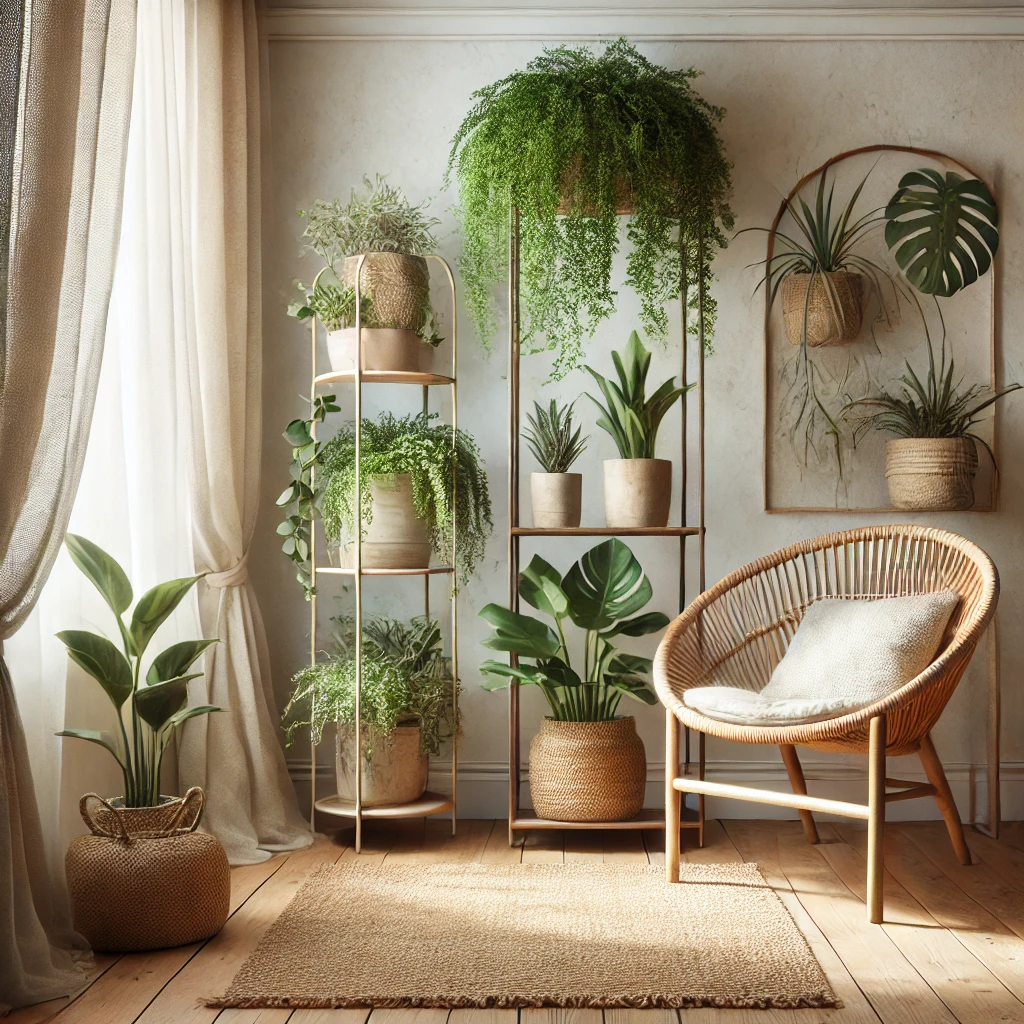Living in a small space doesn’t mean you have to compromise on style or functionality. In fact, with the right decorating tips, you can transform even the tiniest area into a cozy, stylish, and highly functional home.
I’ve always admired how clever design can make a small room feel open, inviting, and packed with personality.
In this post, I’ll share creative ideas to help you make the most of your compact living space.
From multifunctional furniture to smart storage solutions, these tips will maximize your space without sacrificing your unique style.
Use Multifunctional Furniture
In small spaces, multifunctional furniture is a must. These pieces not only save space but also make the room more versatile.
Sofa beds: Perfect for living rooms that double as guest rooms.
Storage ottomans: Use them as seating, a coffee table, or a hidden storage spot for blankets or toys.
Foldable furniture: Opt for tables or chairs that can be stowed away when not in use.
My Tip: Look for furniture with clean lines and neutral colors to keep the space visually open and uncluttered.
Maximize Vertical Space
When floor space is limited, vertical storage becomes your best friend. Utilizing walls and vertical elements keeps your space organized and open.
Install shelves: Use floating or wall-mounted shelves to display books, plants, or decorative items.
Wall hooks and racks: Perfect for hanging coats, bags, or kitchen utensils.
Tall cabinets or bookcases: Maximize storage by going up instead of out.
My Tip: Keep your vertical storage visually light—choose open shelving or cabinets in the same color as your walls for a seamless look.
Choose a Light and Airy Color Palette
Light colors are key to making a small space feel larger and more open. A well-chosen color palette can visually expand your room and create a welcoming atmosphere.
Neutral tones: Use white, beige, or light gray for walls and larger furniture to create a spacious look.
Accent colors: Incorporate subtle pops of color through cushions, rugs, or art to add personality.
Monochromatic schemes: Stick to variations of one color to maintain a clean and cohesive appearance.
My Tip: Add texture to neutral tones with natural materials like woven rugs or wooden furniture to avoid a flat look.
Incorporate Mirrors for Depth
Mirrors are a timeless trick for making small spaces feel larger and brighter. By reflecting light and creating an illusion of depth, they can dramatically transform your room.
Large wall mirrors: Place a full-length or oversized mirror against a wall to double the visual space.
Clustered mirrors: Use multiple smaller mirrors in decorative arrangements for a stylish effect.
Opposite windows: Position mirrors to reflect natural light and brighten the room.
My Tip: Choose frames that match your decor style, whether sleek and modern or ornate and vintage, to make the mirror feel like an intentional design element.
Create Defined Zones in Open Spaces
In small, open-plan layouts, defining specific areas for different activities can make the space feel more functional and organized. Use clever techniques to delineate zones without overwhelming the room.
Rugs: Use area rugs to visually separate spaces like a living area from a dining nook.
Furniture placement: Arrange sofas or bookshelves to act as natural dividers.
Screens or curtains: Add a folding screen or lightweight curtain for temporary separation and privacy.
My Tip: Keep the overall color palette cohesive across zones to maintain a unified look while still defining boundaries.
Go for Built-In and Hidden Storage
In small spaces, built-in and hidden storage can be a lifesaver, helping you maintain a clutter-free and functional environment without sacrificing style.
Beds with storage: Use a platform bed with drawers underneath for extra linens or clothing.
Hidden compartments: Opt for sofas or benches with built-in storage for seasonal items.
Custom cabinetry: Consider built-in shelves or cabinets that make use of awkward corners or nooks.
My Tip: Choose furniture with sleek designs to keep hidden storage inconspicuous and the room visually clean.
Choose Lightweight, Compact Furniture
When decorating small spaces, lightweight and compact furniture can make a significant difference. These pieces keep the room visually open while providing functionality.
Slimline designs: Opt for furniture with narrow profiles, like a streamlined sofa or dining chairs with open backs.
Open-leg furniture: Choose items with exposed legs, such as a mid-century modern coffee table, to create an airy feel.
Stackable or nesting furniture: Use stackable chairs or nesting tables for flexibility and easy storage.
My Tip: Look for furniture made from light materials like glass, acrylic, or thin metal frames to avoid visual heaviness.
Play with Lighting to Enhance the Space
Lighting can transform a small space by creating depth, highlighting key areas, and setting the mood. Layering different types of lighting ensures functionality and ambiance.
Pendant lights: Free up surface space while adding style and general illumination.
Wall sconces: Use these instead of floor or table lamps to save space.
Layered lighting: Combine overhead lights, task lighting, and accent lighting for a dynamic effect.
My Tip: Add dimmable bulbs to adjust the intensity for different activities and times of the day.
Keep Decor Minimal but Meaningful
In small spaces, less is more. Focus on decor that adds personality without creating clutter, and choose pieces that serve both aesthetic and practical purposes.
Statement pieces: Use a single standout decor item, like a bold painting or a sculptural vase, to anchor the room.
Functional decor: Opt for dual-purpose items, such as stylish baskets for storage or decorative clocks.
Layered accents: Incorporate a few well-chosen items, like books, candles, or small plants, to add warmth without overwhelming the space.
My Tip: Stick to a consistent color palette to ensure your decor enhances the space rather than making it feel crowded.
Outdoor-Inspired Elements for Freshness
Bringing nature indoors can make even the smallest space feel vibrant and inviting. Incorporating outdoor-inspired elements adds texture, color, and a sense of calm.
Houseplants: Choose low-maintenance plants like succulents, pothos, or snake plants to bring life to your space.
Natural materials: Incorporate furniture or decor made from wood, rattan, or jute for a warm, earthy vibe.
Light and air: Maximize natural light and use sheer curtains to let in as much sunlight as possible.
My Tip: Use vertical plant stands or hanging planters to add greenery without taking up precious floor space.
Final Thoughts
Decorating a small space doesn’t mean you have to compromise on style or functionality.
By using clever design strategies like multifunctional furniture, maximizing vertical space, and incorporating natural elements, you can create a home that feels spacious, inviting, and uniquely yours.
For me, the beauty of decorating compact spaces lies in the creativity it inspires. Every design choice becomes intentional, and the result is a home that perfectly balances practicality with personality.
Which of these ideas will you try first? I’d love to hear how you’re transforming your small space into something extraordinary!
Let me know in the comments or share your results—I can’t wait to see what you create.
